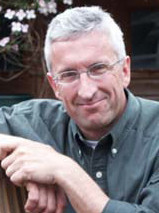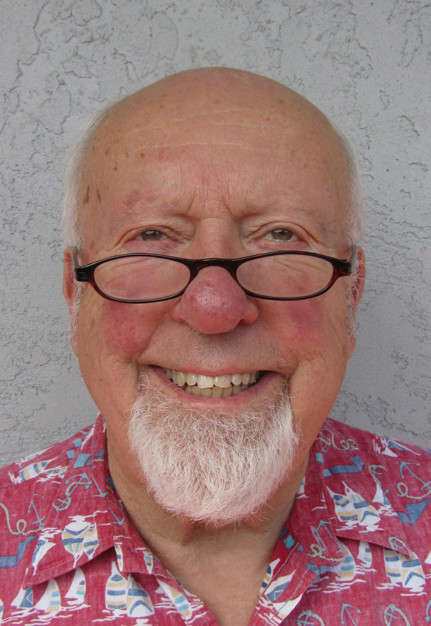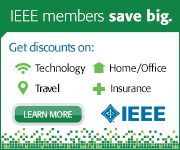

|
Madison Section NewsletterNewsletters are archived online at http://ieee-msn.truenym.net/news.html. |
| Vol. 18, No. 6 | Serving IEEE Members of South Central Wisconsin | June 2015 |



Life
Member Affinity Group Meeting
(Write-up by Chuck Cowie and Chuck Kime) -- David Nelson, UW
Professor and President of the Madison Science Museum and
Olga Trubetskoy, Research Scientist and Board Member of the
Madison Science Museum spoke to our new group on the Madison
Science Museum. The museum is being created to celebrate
Wisconsin contributions in science and engineering. David
initially provided the rationale for establishing a
museum. Among reasons he gave were the presence of
science museums in other cities, the lack of a science
museum to complement other museums in Madison, pragmatic
shortcomings of the museums at the University of Wisconsin –
Madison, and lack of public recognition of the many
highly-distinguished UW faculty in the STEM fields. He then
outlined some of the envisioned guiding concepts for the
museum, including a focus on modern touch-screen displays, a
large display on imaging, hands-on use of past-century
instruments, laboratory space, and loaned/traveling
exhibits. One initial exhibit will be a “powers of ten” room
that illustrates the range of the size and time dimensions
encountered in scientific research. The exhibit progresses
from subatomic particles and molecules through cells and
bacteria to human scale things and geographic features and
on to the planets, solar system and galaxies. Also, there
will be a Wisconsin science and engineering hall of fame
including notable scientists and engineers. The Museum is
being constructed in the Madison College building at 211 N.
Carroll Street. David reported on the initial financial
support for the museum totally $300,000 in donations and
matching funds and indicated that Madison Science Museum is
a 501(c) 3 organization. Individual and corporate
contributions are welcome. David also expressed a strong
interest in gifts-in-kind such as artifacts, instruments,
documents and letters, photos, etc. Needs for volunteers are
wide-ranging from acting as docents to designing and
preparing exhibits and conducting archival research.
Potential sources of volunteers include Madison academics
and students and organizations such as IEEE. Olga
briefly presented her past experience with the science
museum in Boston and outlined potential exhibit ideas in
which IEEE members ranging from the LMAG to Student Chapter
members might be interested in participating. Examples
include a thermal-imaging camera exhibit, LED-based infinity
mirror, and a “Wood’s light” exhibit (Robert Wood, UW
professor from 1897-1901). More
information on the Science Museum is available here.
If you missed the talk but are interested in hearing more,
the Wednesday Night at the Lab presentation on the Science
Museum has been recorded here: WN@TL.
 The Institute of Electrical and
Electronics Engineers or IEEE (read Eye-Triple-E) is an international
non-profit, professional organization dedicated to advancing
technology innovation and excellence for the betterment of humanity.
IEEE and its members inspire a global community through IEEE's highly
cited publications, conferences, technology standards, and
professional and educational activities. It has the most members of
any technical professional organization in the world, with more than
300,000 members in around 150 countries. The IEEE consists of 38
societies, organized around specialized technical fields, with more
than 300 local organizations that hold regular meetings. Discover what
IEEE Member Discounts can offer you. The Member Discounts portfolio
consists of insurance products and programs for the home, office and
travel, all at excellent group rates and reduced pricing. Visit IEEE
Member Discounts to see what’s available in your location and enjoy
the savings. For more information, please visit: IEEE.ORG.
The Institute of Electrical and
Electronics Engineers or IEEE (read Eye-Triple-E) is an international
non-profit, professional organization dedicated to advancing
technology innovation and excellence for the betterment of humanity.
IEEE and its members inspire a global community through IEEE's highly
cited publications, conferences, technology standards, and
professional and educational activities. It has the most members of
any technical professional organization in the world, with more than
300,000 members in around 150 countries. The IEEE consists of 38
societies, organized around specialized technical fields, with more
than 300 local organizations that hold regular meetings. Discover what
IEEE Member Discounts can offer you. The Member Discounts portfolio
consists of insurance products and programs for the home, office and
travel, all at excellent group rates and reduced pricing. Visit IEEE
Member Discounts to see what’s available in your location and enjoy
the savings. For more information, please visit: IEEE.ORG.
